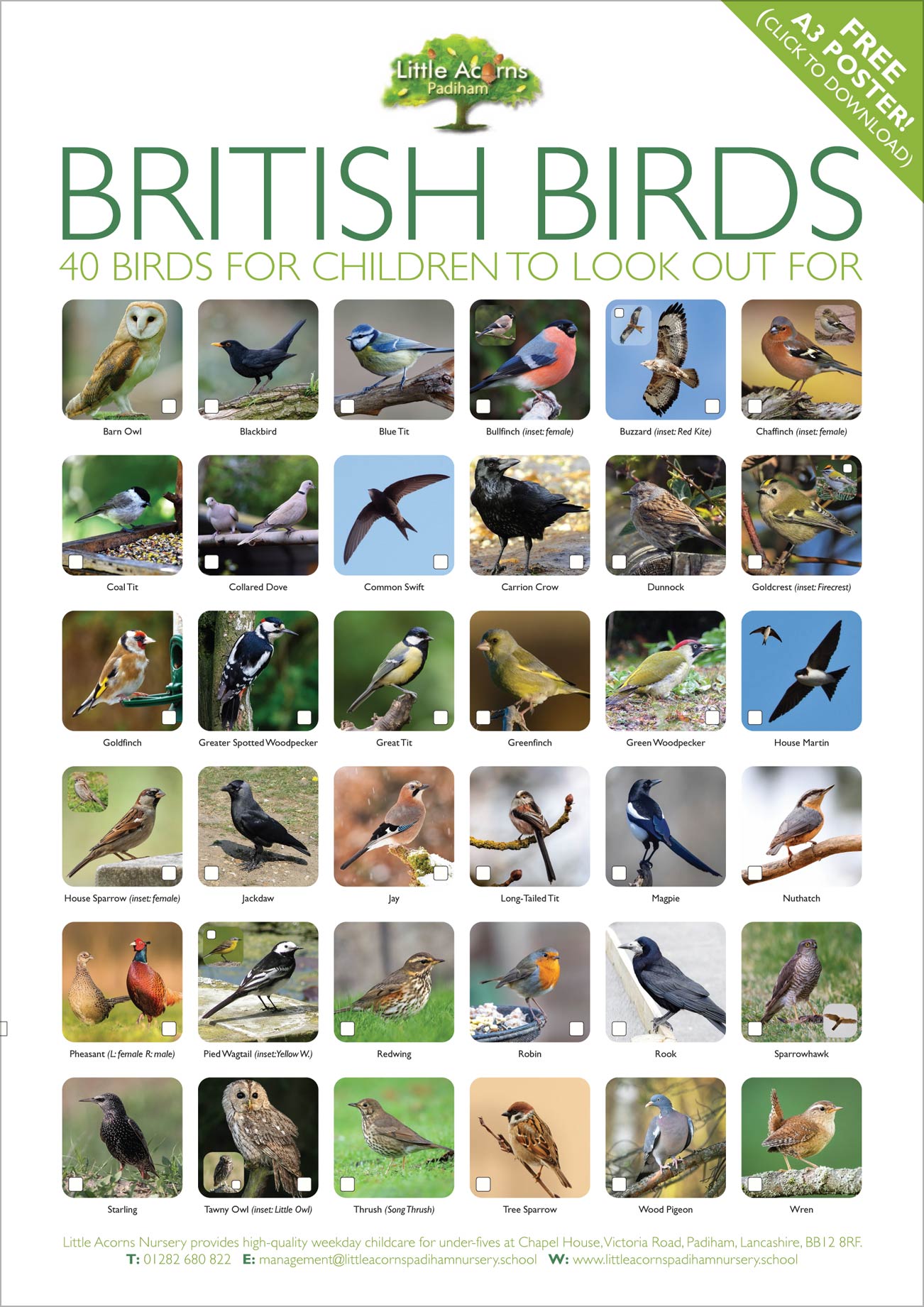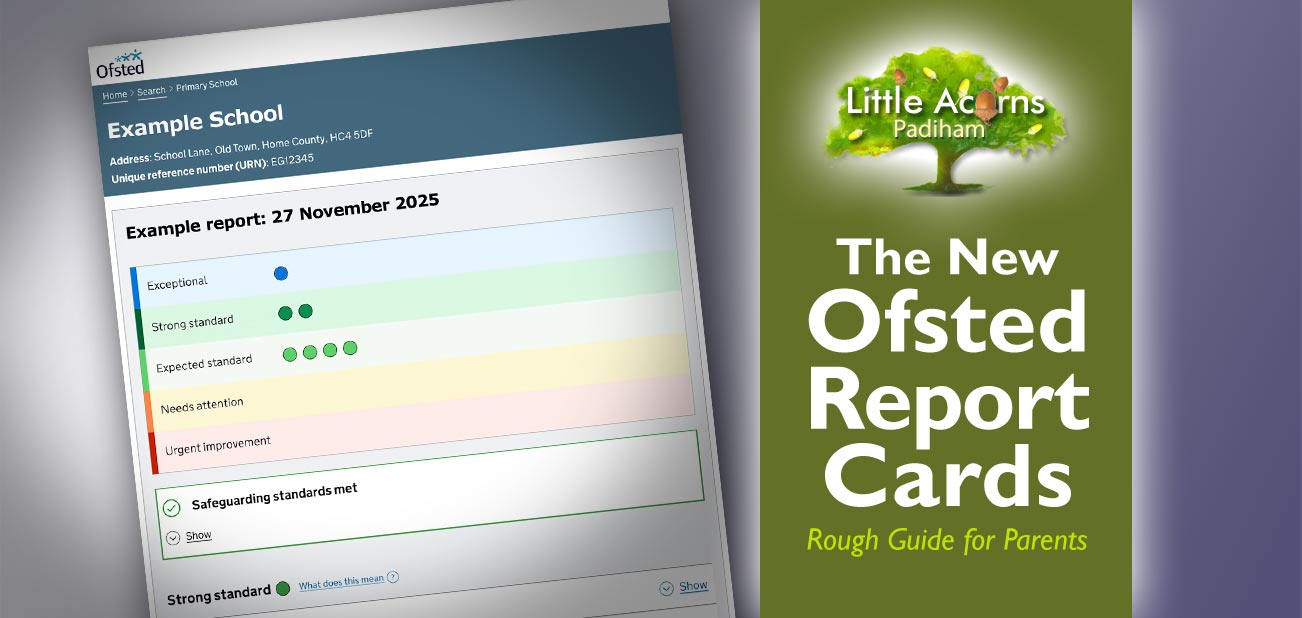
Since November 2025, Ofsted has been rolling out new-style assessments for early years providers, schools, higher education settings, and skills providers. Parents will therefore start to notice the new way of presenting Ofsted ratings. They are multifaceted, with comprehensive detail, and also provide contextual information and metrics that give greater meaning to assessment conclusions.
Key to the new Ofsted assessments is the new, multi-part Report Card. This combines a quick, colour-coded snapshot of the setting’s performance, with sub-sections that delve deeper into how the setting measured up against key areas. All of this replaces the historical approach that, until now, simply used short, some would say controversial, one or two-word “judgements” — Outstanding, Good, Requires Improvement, or Inadequate. Today, we take a look at the new Report Card, explaining how it is presented and what information this new assessment reporting will contain.
The New Ofsted ‘Report Card’
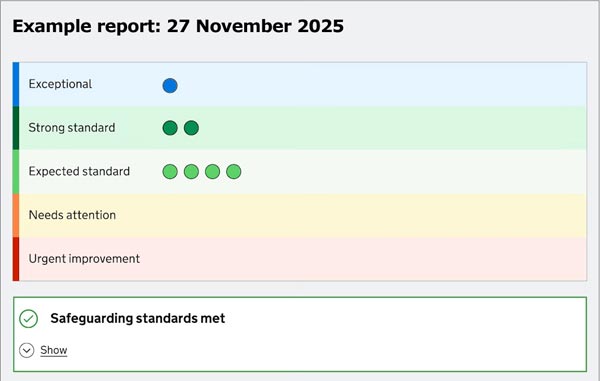
As you can see in our example, the most prominent part of Ofsted’s new Report Card is a colour-coded area that indicates how the setting performed, at a glance. Coloured dots represent key areas and what ‘grade’ they achieved, although they’re not named at this stage. The distribution of coloured dots is a way to see, very quickly, how a setting is performing overall.
- Areas judged to be ‘Exceptional’ are denoted by blue dots;
- Those with a ‘Strong standard’ are awarded dark green dots;
- Those reaching the ‘Expected standard’ are indicated by bright green dots;
- If an area ‘Needs attention’, it’s indicated by an orange dot;
- And finally, areas that need ‘Urgent improvement’ will be shown as a red dot.
If all is well at a setting, parents will see just greens and, if exceptional in any areas, blues. A good facet of this new approach is that, if a setting is doing well in many of its key areas, it will no longer “live or die” if there is a shortcoming in another key area. Yes, they may see an orange or red dot, but they’ll also be able to instantly spot that the setting is doing well in other areas (green and blue dots). So, it’s a more comprehensive and balanced way to represent a setting.
What Key Areas do the Coloured Dots Represent?
The coloured dots represent defined “key areas” assessed by Ofsted inspectors. The key areas vary a little depending on the type of setting being assessed, as listed in the tabulated sections below.
Safeguarding on the Report Card
Safeguarding features prominently on the Report Card for all types of settings. It does so in a separate section of its own, below the top colour-coded section. There are just two possibilities for the assessment of the setting’s safeguarding: either Met or Not Met. And, as with many of the subsequent inclusions on the Report Card, the Safeguarding box is expandable. Users can click the ‘Show’ link to view detailed notes explaining what the finding means (see example below) and a further link that explains how safeguarding was evaluated by Ofsted. Both links can then be closed to return to the more compact view.

The Key Areas Section of the Report Card
After the Safeguarding section comes the individual ‘key areas’ that we listed above and which were graded higher up in the colour-coded section. Grouped by attainment/colour (best/blue at the top), each now has an expandable box of its own. As with the Safeguarding box, users can click a ‘Show’ link that enables detailed Ofsted notes to be displayed. Such notes go into great detail about Ofsted’s findings about the metric in question. So, if the attainment is high, parents will be able to see how and why Ofsted thinks that to be the case. Likewise, if the attainment is lacking in some way, parents can see why Ofsted thought so and what they suggest the setting needs to do to improve matters.
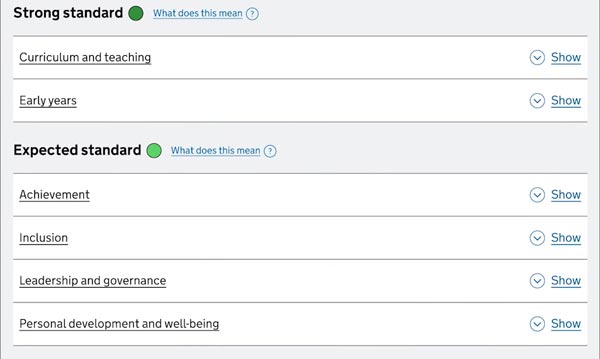
Each of the sections expands as shown for the ‘Inclusion’ example below.
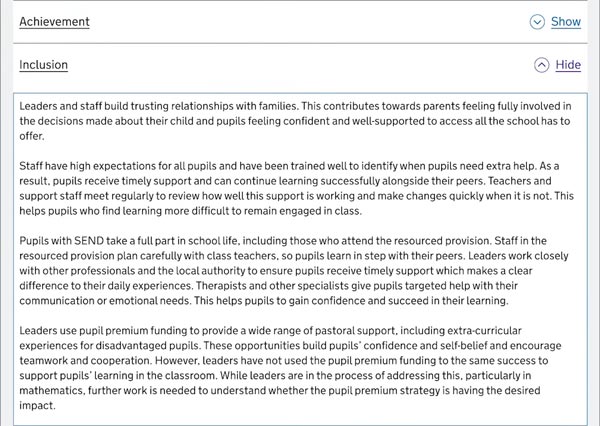
What It’s Like at the Setting & More
Below the Key Areas sections come 3 useful inclusions:
- The ‘What it’s like to be a pupil at this [setting]’ section does ‘exactly what it says on the tin’ and, if expanded to show the detail, explains what life is like at the nursery, school, further education setting or skills provider in question. It’s a new and useful inclusion for parents to consider as part of their search for an appropriate provider for their child.
- The ‘Next Steps’ section provides recommendations from Ofsted about what the provider can do to improve things (as appropriate).
- The ‘About this inspection’ section comes next and, if expanded, explains more about the inspection process on the day the Ofsted Inspector visited.
- The report card then goes on to name the Inspector(s), as well as providing a link to download the Inspection Report as an Acrobat PDF file.
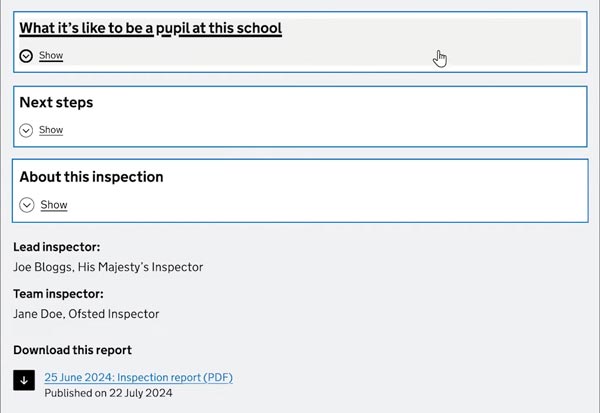
The Facts & Figures Section
The final section in the Report Card contains contextual information that provides a kind of backdrop to the setting’s situation. Examples include the number of pupils attending, the capacity of the setting, the percentage of pupils with SEND and/or an EHC plan, whether the setting is in a deprived area, and so on. Click here to view an example. Such facts and figures provide some important context, including the highlighting of some challenges they may face, and may at least partly explain performance. As such, they are a useful set of new metrics for parents to factor in when finding a provider for their child.
Little Acorns Nursery, Padiham
Rated as a ‘Good Provider’ by Ofsted
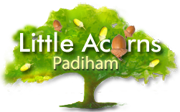
 Little Acorns Nursery, Padiham, has not yet had a new-style Ofsted assessment. However, the setting has a ‘Good Provider’ status following the most recent Ofsted inspection back in May (2025). Indeed, Ofsted rated the nursery as ‘Good’ in every category. What’s more, at the time of writing, the nursery has a review rating of 5 out of 5 on Google and 10 out of 10 on DayNurseries.co.uk — it simply doesn’t get better than that! Parents can therefore rest assured that, if they send their child to Little Acorns Nursery in Padiham, they’ll be in safe and caring hands at a childcare setting that does everything it can to nurture their learning and development. That’s all in a safe, homely, and stimulating environment.
Little Acorns Nursery, Padiham, has not yet had a new-style Ofsted assessment. However, the setting has a ‘Good Provider’ status following the most recent Ofsted inspection back in May (2025). Indeed, Ofsted rated the nursery as ‘Good’ in every category. What’s more, at the time of writing, the nursery has a review rating of 5 out of 5 on Google and 10 out of 10 on DayNurseries.co.uk — it simply doesn’t get better than that! Parents can therefore rest assured that, if they send their child to Little Acorns Nursery in Padiham, they’ll be in safe and caring hands at a childcare setting that does everything it can to nurture their learning and development. That’s all in a safe, homely, and stimulating environment.
To register your interest for a nursery place, organise a tour of the setting, or ask any questions, please get in touch using one of the options below. We can’t wait to meet you and your child!
Families outside Padiham, but living in nearby locations, may also find Little Acorns Nursery convenient for their childcare needs, for example, those in Burnley, Hapton, Rose Grove, Altham, Huncoat, Read, Simonstone, Sabden, Higham, and Wood End.
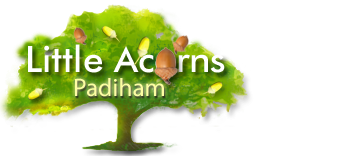
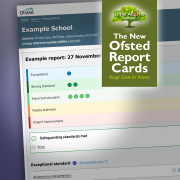
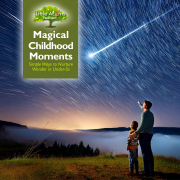
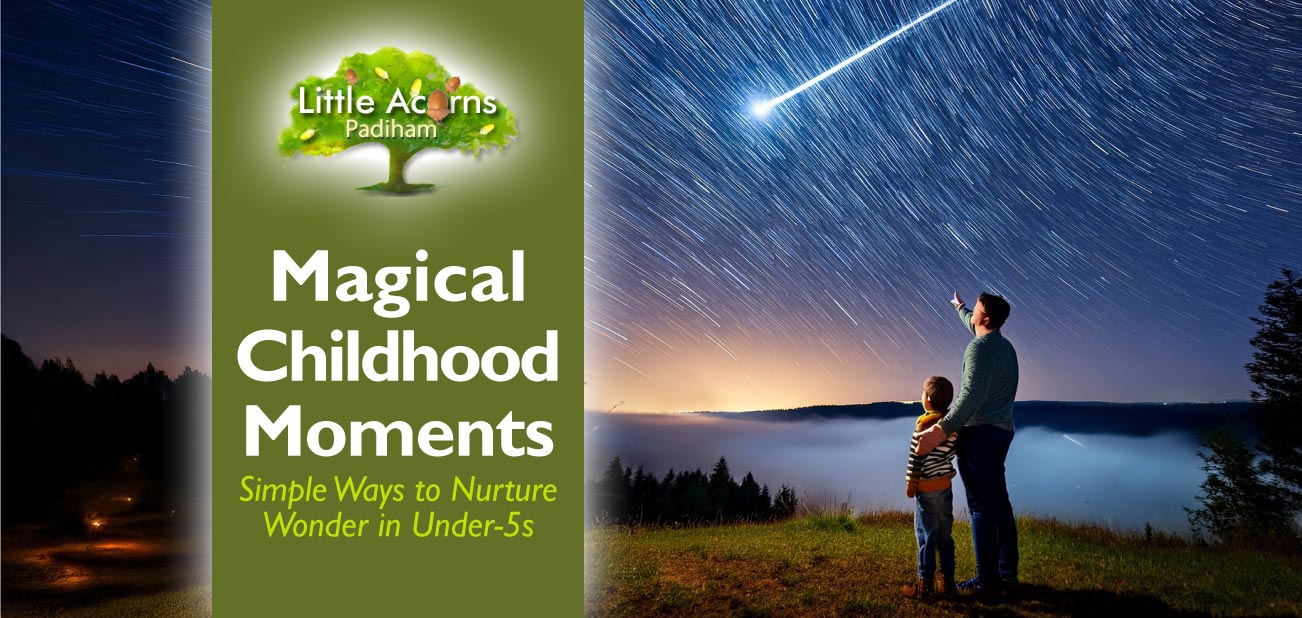
 Childhood is full of magic — not just the kind found in fairy tales, but also the quiet, everyday kind that’s instinctively fed by a child’s curiosity. Little ones have an innate sense of wonder; the world is vast, mysterious, and full of possibility. Whether they’ve discovered a camouflaged moth on a tree trunk, a rainbow stretching across the sky, or the miraculous shape of a fresh snowflake, each can feel like an amazing discovery to a young child. And they really are amazing!
Childhood is full of magic — not just the kind found in fairy tales, but also the quiet, everyday kind that’s instinctively fed by a child’s curiosity. Little ones have an innate sense of wonder; the world is vast, mysterious, and full of possibility. Whether they’ve discovered a camouflaged moth on a tree trunk, a rainbow stretching across the sky, or the miraculous shape of a fresh snowflake, each can feel like an amazing discovery to a young child. And they really are amazing! Young children experience the world differently to adults. They notice details we’ve long since stopped paying attention to — the way water ripples in a puddle, a cloud that may be shaped like an animal, or the captivating sparkle of a ‘special’ rock as it glints in the sun. To little ones, these are truly magical. What’s more, they’re all around us but, with our busy lives, go unnoticed so often by adults.
Young children experience the world differently to adults. They notice details we’ve long since stopped paying attention to — the way water ripples in a puddle, a cloud that may be shaped like an animal, or the captivating sparkle of a ‘special’ rock as it glints in the sun. To little ones, these are truly magical. What’s more, they’re all around us but, with our busy lives, go unnoticed so often by adults. The
The  Starry nights lend us a good example. On a warm summer night, perhaps wrap up in blankets, grab a hot chocolate, and sit outside together to watch the stars. See if your child can spot a satellite on its quiet journey, or a shooting star racing across the night sky. Discuss what it might be like up there in space. Ponder whether there are other creatures on faraway planets looking back at us — perhaps a tiny speck of light to them, just as they are to us. We don’t have all the answers to such big questions, but that’s OK — it demonstrates the enormity and complexity of life and the universe — and can only increase the child’s sense of wonder.
Starry nights lend us a good example. On a warm summer night, perhaps wrap up in blankets, grab a hot chocolate, and sit outside together to watch the stars. See if your child can spot a satellite on its quiet journey, or a shooting star racing across the night sky. Discuss what it might be like up there in space. Ponder whether there are other creatures on faraway planets looking back at us — perhaps a tiny speck of light to them, just as they are to us. We don’t have all the answers to such big questions, but that’s OK — it demonstrates the enormity and complexity of life and the universe — and can only increase the child’s sense of wonder.
 Magical memories often come not just from what we do with our children, but how we do it. Giving a child and their special discoveries your full attention, feeding back, pondering questions, and marvelling together, all make such moments more special and memorable. The real magic lies in connection — in being fully present with your child, sharing laughter, the sense of wonder, and the warmth of togetherness. The most meaningful memories from childhood need not come from big events or expensive outings — they often come from simple moments that make a child feel curious, loved, and seen.
Magical memories often come not just from what we do with our children, but how we do it. Giving a child and their special discoveries your full attention, feeding back, pondering questions, and marvelling together, all make such moments more special and memorable. The real magic lies in connection — in being fully present with your child, sharing laughter, the sense of wonder, and the warmth of togetherness. The most meaningful memories from childhood need not come from big events or expensive outings — they often come from simple moments that make a child feel curious, loved, and seen.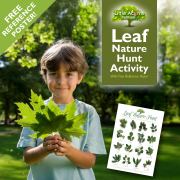
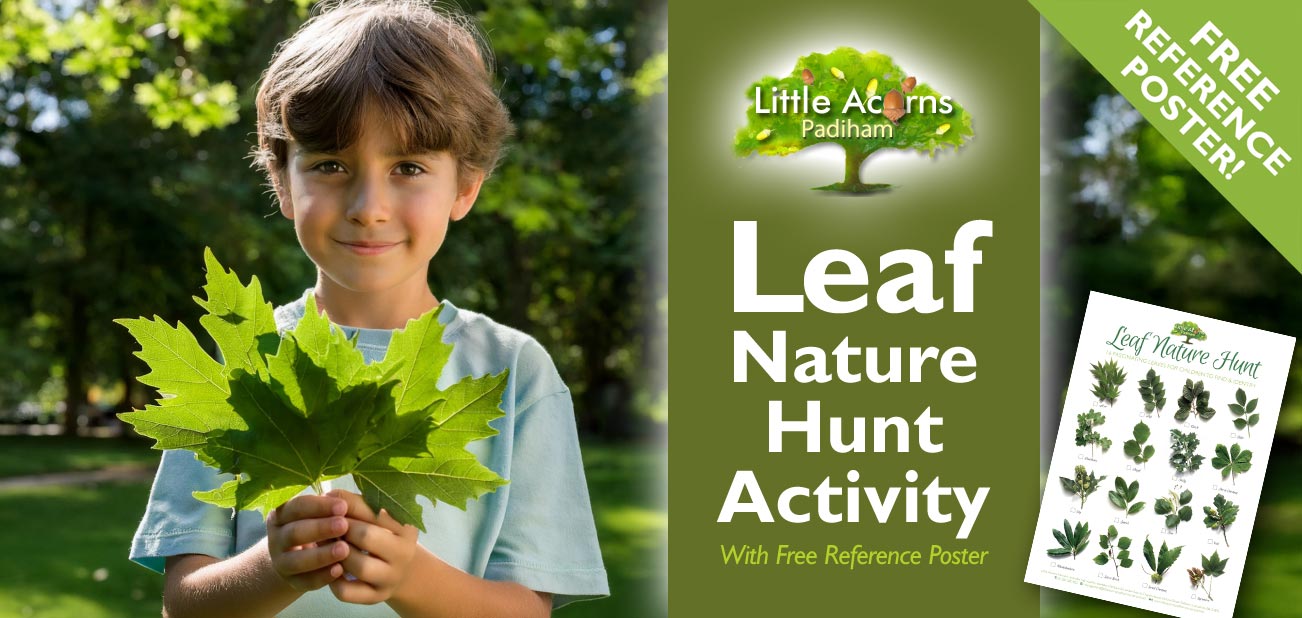
 Summer and autumn are wonderful times for children to experience nature in its full glory. At such times, the natural world is brimming with colourful flora and fauna, and it’s a spectacular feast for their eyes and senses. Outdoors, little ones can learn an enormous amount about the natural world around them, enjoy some fresh air and freedom – under supervision, of course — and reap the
Summer and autumn are wonderful times for children to experience nature in its full glory. At such times, the natural world is brimming with colourful flora and fauna, and it’s a spectacular feast for their eyes and senses. Outdoors, little ones can learn an enormous amount about the natural world around them, enjoy some fresh air and freedom – under supervision, of course — and reap the 
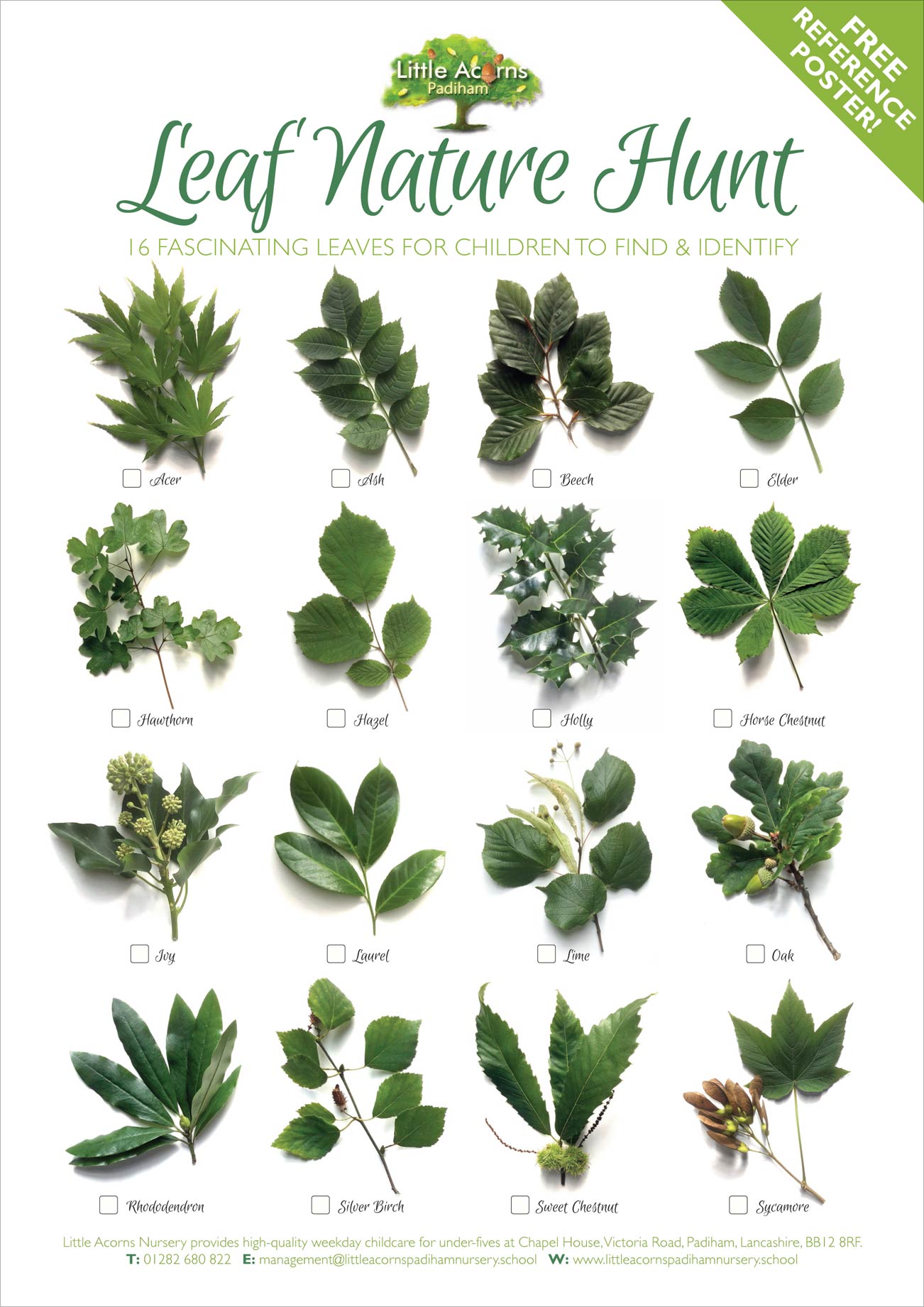
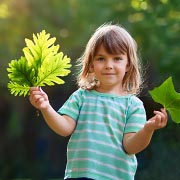 Point out the huge variety of different shapes, sizes, and textures of leaves in the natural world.
Point out the huge variety of different shapes, sizes, and textures of leaves in the natural world.




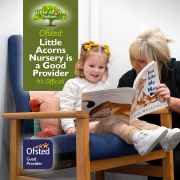
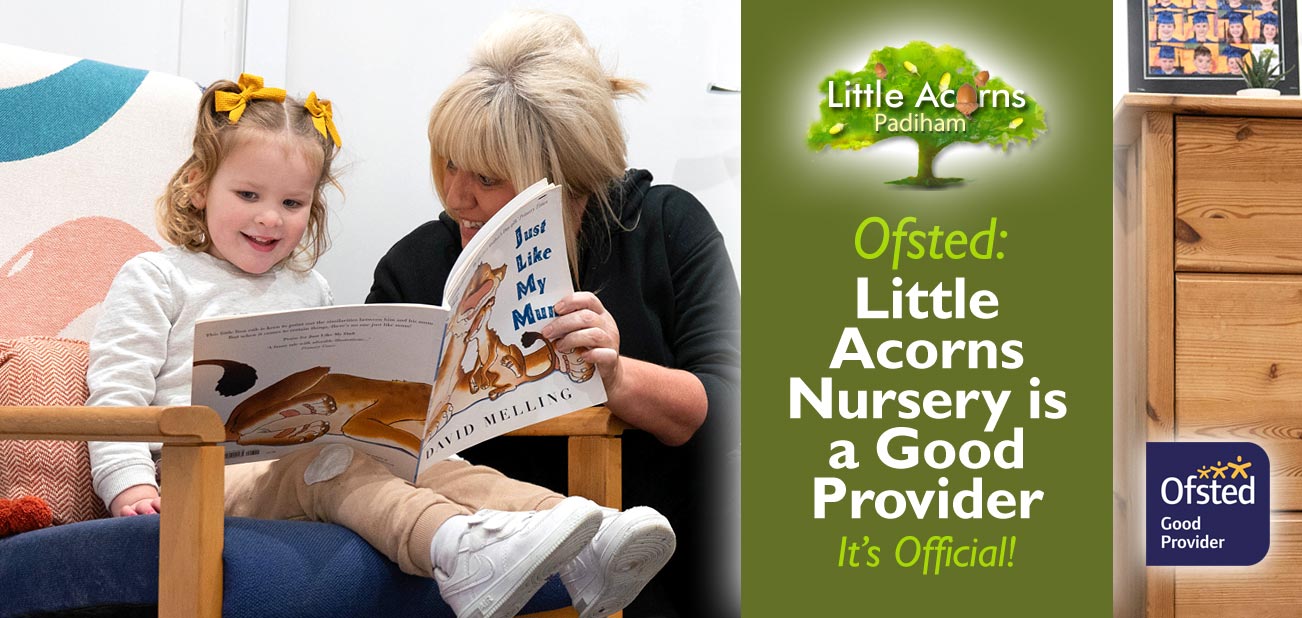
 We’re delighted to announce that Ofsted has published a stunning report for Little Acorns Nursery, Padiham. It’s now official that this excellent Padiham childcare setting is a ‘Good Provider’ — in every category! What’s more, the Ofsted inspector published some wonderfully positive comments about the nursery, staff, and quality of care as part of the report. Their findings are a testament to the high quality of the setting, the professionalism of its early years practitioners and leadership, and the positive impact the nursery has on babies and children in its care. Today, we take a deep dive into the details.
We’re delighted to announce that Ofsted has published a stunning report for Little Acorns Nursery, Padiham. It’s now official that this excellent Padiham childcare setting is a ‘Good Provider’ — in every category! What’s more, the Ofsted inspector published some wonderfully positive comments about the nursery, staff, and quality of care as part of the report. Their findings are a testament to the high quality of the setting, the professionalism of its early years practitioners and leadership, and the positive impact the nursery has on babies and children in its care. Today, we take a deep dive into the details.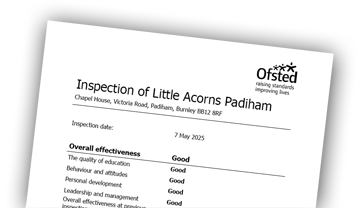


 Attention working families: applications are now open for eligible children, aged from only 9 months, to receive 1140 hours of free childcare per year from September 2025. What’s noteworthy is that this will be the first time such young infants and toddlers can access so many free hours. It effectively doubles the number of free childcare hours previously available to those under 2 via the scheme. The new, extended funding is for eligible working families, who now have until the 31st of August to apply if they would like their child(ren) to start in the September 2025 term.
Attention working families: applications are now open for eligible children, aged from only 9 months, to receive 1140 hours of free childcare per year from September 2025. What’s noteworthy is that this will be the first time such young infants and toddlers can access so many free hours. It effectively doubles the number of free childcare hours previously available to those under 2 via the scheme. The new, extended funding is for eligible working families, who now have until the 31st of August to apply if they would like their child(ren) to start in the September 2025 term. This newly extended scheme will be profoundly beneficial to parents, children, the business world, and the economy. Let’s take a look:
This newly extended scheme will be profoundly beneficial to parents, children, the business world, and the economy. Let’s take a look: The funded childcare is for children of working parents with earnings within the specific range outlined below. Under this scheme, children receiving the free hours from the September 2025 term must be aged no less than 9 months old on 1st September 2025 and free funding for those who remain eligible is available right up until school age.
The funded childcare is for children of working parents with earnings within the specific range outlined below. Under this scheme, children receiving the free hours from the September 2025 term must be aged no less than 9 months old on 1st September 2025 and free funding for those who remain eligible is available right up until school age. As our families regularly confirm, Little Acorns in Padiham is a highly-regarded childcare nursery that attracts
As our families regularly confirm, Little Acorns in Padiham is a highly-regarded childcare nursery that attracts 



 Today, we remind Padiham families that Little Acorns Nursery supports the new — free — childcare scheme for eligible children including babies as young as just 9 months of age. Although it’s available only to eligible working families, the bar to entry is fairly low. The childcare funding is therefore attainable for many families. This free childcare is not just limited to babies either and, what’s more, it’s due to become even more generous from September 2025. In our guide below we’ll outline who is eligible, how much childcare funding they can access, how many childcare hours that equates to, and what the eligibility criteria are. If you’re the parent of a baby, toddler, or child up to three years old, this is for you.
Today, we remind Padiham families that Little Acorns Nursery supports the new — free — childcare scheme for eligible children including babies as young as just 9 months of age. Although it’s available only to eligible working families, the bar to entry is fairly low. The childcare funding is therefore attainable for many families. This free childcare is not just limited to babies either and, what’s more, it’s due to become even more generous from September 2025. In our guide below we’ll outline who is eligible, how much childcare funding they can access, how many childcare hours that equates to, and what the eligibility criteria are. If you’re the parent of a baby, toddler, or child up to three years old, this is for you. For those working families who are eligible, the scheme provides 570 hours per year of free childcare to children aged from 9 months to 3 years. This is normally taken as 15 hours per week for 38 weeks, usually aligning with the standard educational term-time weeks for school timetables. That said, it may be possible to stretch the hours over more weeks of the year if your childcare provider is able to accommodate such flexibility.
For those working families who are eligible, the scheme provides 570 hours per year of free childcare to children aged from 9 months to 3 years. This is normally taken as 15 hours per week for 38 weeks, usually aligning with the standard educational term-time weeks for school timetables. That said, it may be possible to stretch the hours over more weeks of the year if your childcare provider is able to accommodate such flexibility. We’ll try to simplify the eligibility criteria for you. Whether it’s for a baby aged 9 months, a toddler of 1 or 2, or a child aged 3 or 4, there are essentially four main criteria for this specific type of childcare funding:
We’ll try to simplify the eligibility criteria for you. Whether it’s for a baby aged 9 months, a toddler of 1 or 2, or a child aged 3 or 4, there are essentially four main criteria for this specific type of childcare funding: Well, it’s good news. It’s already the case that all 3 and 4-year-olds living in England are eligible to receive 570 hours (15 per week) of free childcare anyway. That’s available under what’s known as ‘Universal Entitlement’, a Government childcare funding scheme that’s been around for some time. What’s more, those working families that are eligible for the ‘new’ free childcare for children aged 9 months to 3 years are also likely to be eligible for a top-up of their child’s Universal Entitlement once they reach the ages of 3 and 4. In those cases, they’ll be entitled to 30 hours per week over 38 weeks (or however the 1140 free hours are spread out). That’s because the eligibility criteria are the same (see section above).
Well, it’s good news. It’s already the case that all 3 and 4-year-olds living in England are eligible to receive 570 hours (15 per week) of free childcare anyway. That’s available under what’s known as ‘Universal Entitlement’, a Government childcare funding scheme that’s been around for some time. What’s more, those working families that are eligible for the ‘new’ free childcare for children aged 9 months to 3 years are also likely to be eligible for a top-up of their child’s Universal Entitlement once they reach the ages of 3 and 4. In those cases, they’ll be entitled to 30 hours per week over 38 weeks (or however the 1140 free hours are spread out). That’s because the eligibility criteria are the same (see section above).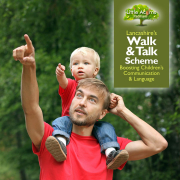
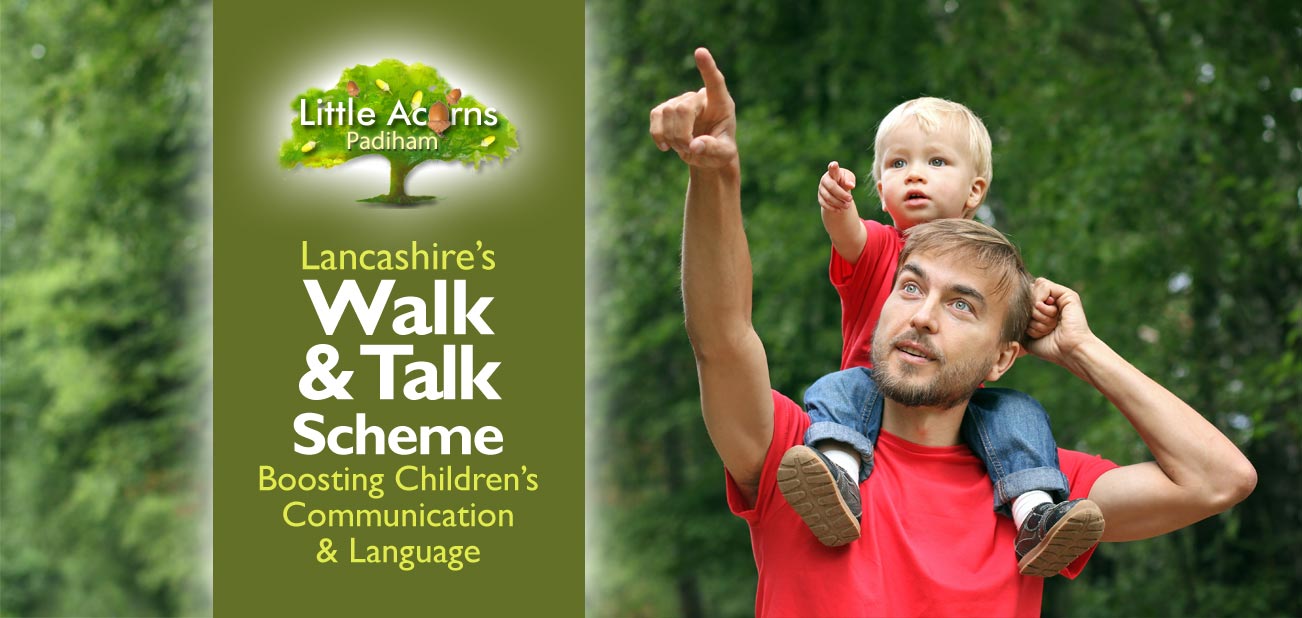
 Lancashire’s Walk & Talk Initiative is a scheme that’s wholeheartedly supported by the childcare practitioners at Little Acorns Nursery in Padiham. We encourage all Lancashire parents to take part too. It’s an initiative that is incredibly simple but has far-reaching benefits for children in their early years. Let’s take a look today at what Walk & Talk is all about, what its aims are, the benefits to children, and how families can get involved.
Lancashire’s Walk & Talk Initiative is a scheme that’s wholeheartedly supported by the childcare practitioners at Little Acorns Nursery in Padiham. We encourage all Lancashire parents to take part too. It’s an initiative that is incredibly simple but has far-reaching benefits for children in their early years. Let’s take a look today at what Walk & Talk is all about, what its aims are, the benefits to children, and how families can get involved.
 a reduction in the ‘word gap’ — helping children learn new words and widen vocabulary;
a reduction in the ‘word gap’ — helping children learn new words and widen vocabulary; The scheme also aims to encourage children to use a variety of senses. These include, for example, sight, smell, touch, taste, hearing and, of course, active listening. When out on walks there are so many different things for children’s senses to be stimulated by and each lends itself to a conversation. Whether it’s the sound of birdsong, the feeling of the wind on their faces, the smell of freshly-cut grass on the breeze, the noise of traffic, the dazzlingly beautiful colours of blossom, or the mouth-watering smell of food cooking around the neighbourhood or town, walking is indeed a feast for the senses.
The scheme also aims to encourage children to use a variety of senses. These include, for example, sight, smell, touch, taste, hearing and, of course, active listening. When out on walks there are so many different things for children’s senses to be stimulated by and each lends itself to a conversation. Whether it’s the sound of birdsong, the feeling of the wind on their faces, the smell of freshly-cut grass on the breeze, the noise of traffic, the dazzlingly beautiful colours of blossom, or the mouth-watering smell of food cooking around the neighbourhood or town, walking is indeed a feast for the senses.
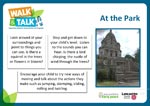
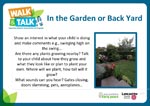
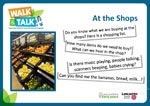
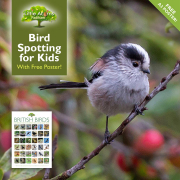
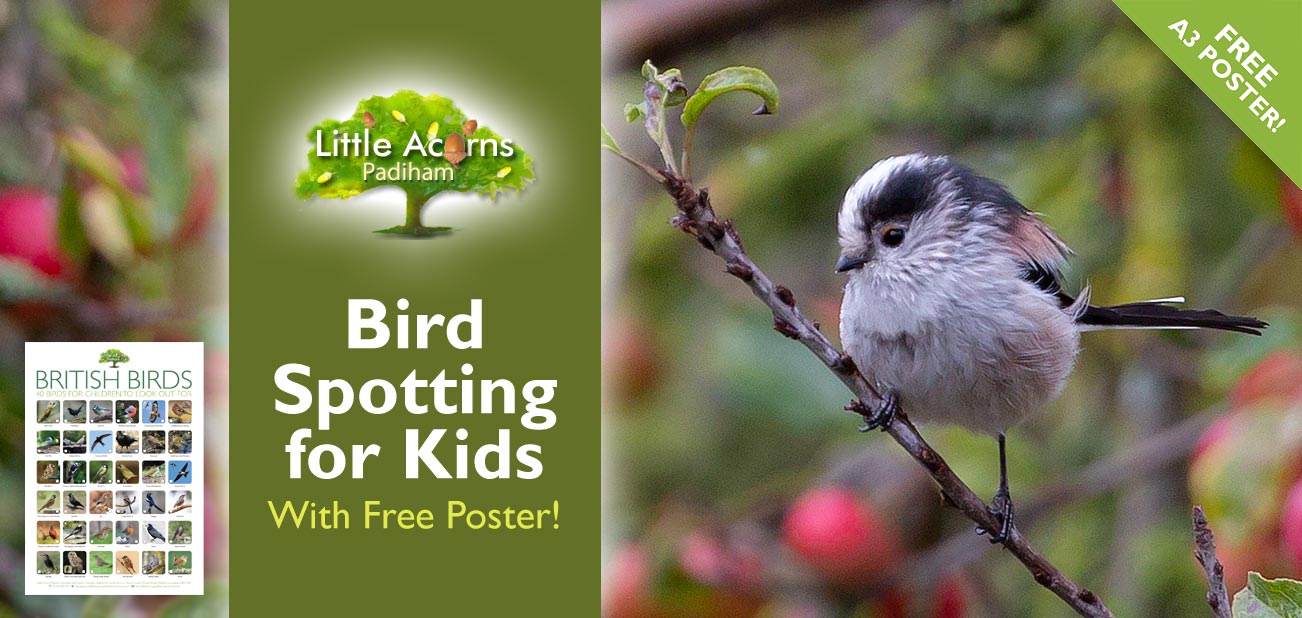
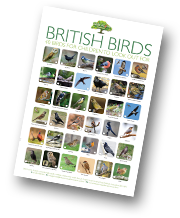 Today’s bird spotting activity for kids continues our series of nature-themed posts that each come with a free reference poster for families to download. Featuring 40 British birds, the activity and the poster represent a great opportunity to get children of all ages outdoors, closer to nature. As many of us know,
Today’s bird spotting activity for kids continues our series of nature-themed posts that each come with a free reference poster for families to download. Featuring 40 British birds, the activity and the poster represent a great opportunity to get children of all ages outdoors, closer to nature. As many of us know, 